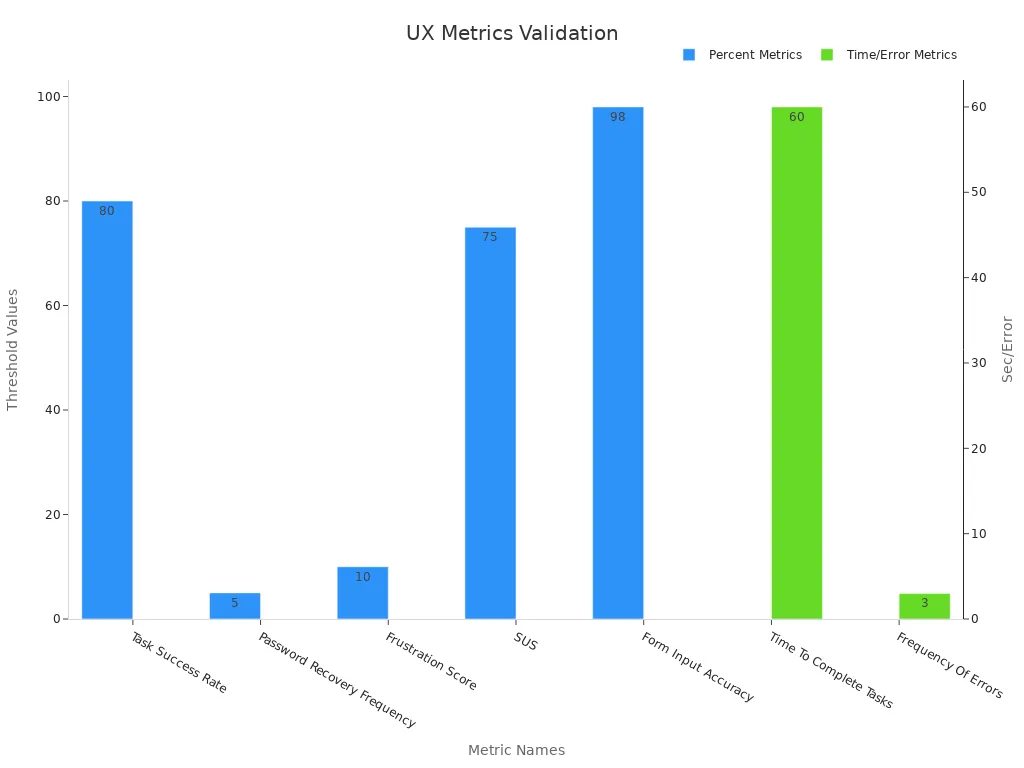Understanding the Role of a Context Engineer

A context engineer builds systems that help AI understand information better. You design how AI remembers and uses facts during a conversation or task. This job has become important because AI needs more than good prompts. You must organize and manage what the AI sees or recalls. When you give AI the right context, you help it give smarter answers.
Key Takeaways
Context engineering helps AI pick and use the right facts. This helps AI give better and fairer answers.
A context engineer makes systems that sort what AI remembers. They also add new facts when AI works on tasks.
Good context helps AI do a better job. It links ideas, uses new data, and stops common errors.
Context engineering needs skills like coding and looking at data. It also needs clear talking to make strong AI systems.
Using prompt and context engineering together makes smarter AI. This AI can change and fit real needs.
What Is Context in AI

Defining Context
You might wonder what "context" means when you work with AI. In simple terms, context is all the information that helps an AI system understand what you want. This includes facts, past conversations, user data, and even the tools the AI can use. When you give an AI more than just a single prompt, you help it make better decisions.
The Software Engineering Institute (SEI) Blog explains that context in AI covers things like trustworthiness, fairness, robustness, and explainability. You can measure these by asking questions such as: Does the data represent real-world situations? How was the model trained? Are there ways to check for bias or errors? These questions help you see if the AI will work well in real life.
Tip: Always think about what information your AI needs to do its job. The right context makes your AI more reliable and fair.
Why Context Matters
Context matters because it shapes how AI understands and responds to you. If you only give an AI a short prompt, it might miss important details. When you add more context, the AI can connect ideas, remember past actions, and use the right tools.
AI systems have moved from using static prompts to dynamic systems that pull in many sources of context, like user data and previous interactions.
Giving the right context, tools, and formatting helps large language models (LLMs) complete tasks more reliably.
Context must change in real time, not stay fixed, so the AI can adapt to new information.
Good context engineering helps prevent common AI mistakes by making sure the AI has what it needs, instead of just hoping for better models.
In the past, AI models worked with fixed data and could not access real-time information. Now, new systems like the Model Context Protocol let AI connect to live data and tools. This change makes AI more useful and accurate for you. When you manage context well, you help your AI perform better and avoid errors.
Role of a Context Engineer

Core Responsibilities
A context engineer builds systems to help AI use the right information. You do more than just write prompts for the AI. You make ways for AI to remember and find facts when needed. Your work helps AI know what users want and how to answer.
Note: You help AI connect different kinds of information. This can be user messages, system prompts, or outside data like calendars.
Some main responsibilities for a context engineer are:
Build systems that update what the AI knows as new facts come in.
Organize what the AI remembers, so it can use past actions to make better choices.
Make rules for what the AI should keep, forget, or find during a task.
Work with teams to make sure AI tools fit into real jobs, like coding or email.
Test and improve how the AI uses context, so it gives better answers.
Many companies now see why context engineers are important. In a big software company, a study showed developers using AI tools like ChatGPT had new problems. These problems included making sure the AI had the right context for hard tasks. The study found context engineers help teams use AI tools well and fix problems as they happen.
You also help AI agents do better by bringing together different types of context. For example, you might combine file changes, user intent, and logs to help an AI coding agent. Or, you might set up an AI email assistant to use calendar data and meeting notes to write better replies. Your job is more than prompt engineering because you build a full picture of what the AI needs.
Tip: When you manage context well, you help AI avoid mistakes and give users a better experience.
Skills Needed
To do well as a context engineer, you need both technical and soft skills. You must know how to work with data, build systems, and talk with others about your work.
Some important skills for a context engineer are:
Analytics: You should know how to find useful information in large data sets.
Coding: You need to write code, often in Python or Java, to build and manage data systems.
Database Knowledge: You should understand SQL and NoSQL databases, like MySQL or MongoDB.
Cloud Tools: You may use cloud platforms such as AWS or Google Cloud to store and process data.
Big Data Tools: You might work with tools like Apache Spark or Hadoop to handle lots of information.
Communication: You must explain your ideas clearly to other team members.
Curiosity and Learning: You should always look for ways to improve your systems and learn new things.
Note: Many context engineers have a background in computer science or data engineering. Some have advanced degrees, which can help you move into leadership roles.
The need for context engineers is growing. The U.S. Bureau of Labor Statistics says jobs for computer and information research scientists will grow 22% from 2020 to 2030. Salaries are high, with data engineers earning about $98,860 and data scientists earning up to $134,000 each year. These numbers show your skills as a context engineer are valuable today.
Skill Area | Example Tools/Knowledge | Why It Matters |
|---|---|---|
Analytics | Data analysis, ETL tools | Find and organize key context |
Coding | Python, Java, Scala | Build and automate systems |
Databases | SQL, NoSQL, MongoDB | Store and retrieve information |
Cloud Platforms | AWS, Azure, Google Cloud | Scale and manage data |
Big Data | Spark, Kafka, Hadoop | Handle large data sets |
Communication | Reports, presentations | Share insights with teams |
As a context engineer, you help shape how AI works in real life. You make sure AI systems have the right information to do their jobs well. Your skills help AI become more useful, fair, and reliable for everyone.
Context vs. Prompt Engineering
Key Differences
You may ask how context engineering and prompt engineering are different. Prompt engineering is about picking the right words or instructions for an AI. You try to get better answers by changing how you ask questions. Context engineering is about setting up everything around the AI. You choose what the AI can see, what it remembers, and how it links facts.
Aspect | Prompt Engineering | Context Engineering |
|---|---|---|
Main Focus | Wording of input | Information environment |
Scope | Single prompt | Ongoing, dynamic context |
Example | Rewriting a question | Adding user history, tools |
Impact | Immediate response | Long-term performance |
When you use prompt engineering, you try different ways to ask things. You might change a word or add a clue. Then you check which way works best. Studies show that changing prompts does not always help much. Sometimes, how the AI is made or trained matters more than the prompt. So, you should not only change prompts to make AI better.
When to Use Each
Use prompt engineering when you want fast changes or want to see how the AI answers different questions. This is good for easy jobs or when the AI does not need to remember things.
Use context engineering when your AI must do hard jobs or work with lots of data. In big companies, context engineers help AI use live data from many places. This stops data from getting lost or stuck. Companies like Merck and NHS trusts saved a lot of time by using context well. They made their AI better and more correct by giving it the right facts at the right time.
Prompt engineering helps you fix single answers.
Context engineering lets you make smarter, more flexible AI.
Tip: For the best results, use both ways. Start with clear prompts. Then build strong context systems to help your AI as it grows.
Techniques and Strategies
Context Selection
You have to pick the right information for your AI. This is called context selection. Good context selection helps your AI make better choices. It also helps your AI avoid mistakes. Experts in different jobs use special ways to choose context. In factories, control charts help find problems. In medicine, trials compare treatments. In online shopping, customer data shows what people want.
Here is a table that shows how different jobs use context selection:
Context/Industry | Practical Example | Strategy Used |
|---|---|---|
Manufacturing | Control charts for defects | Real-time data analysis, pilot testing |
Medical Research | Randomized controlled trials | Research design, peer review |
Social Sciences | Survey and demographic studies | Data distribution, non-parametric methods |
Market Research | Regression and cluster analysis | Data type, technical constraints |
Weather Forecasting | Predictive modeling with historical data | Bayesian models, machine learning |
E-commerce | Customer behavior prediction | Big data analytics, machine learning integration |
Each job uses context selection to get better results. The best ways include asking experts, using good tools, and matching data to your goals. These steps help your AI become stronger and more flexible.
Compression and Memory
AI models often need to handle lots of information. You can use compression and memory tricks to help your AI remember what matters. This saves energy and space. For example, TinyBERT uses compression to save over 90% of energy. It still keeps accuracy above 92%. Pruning and distillation also cut energy use and carbon emissions. They do this with almost no loss in performance.
Model / Technique | Energy Reduction (%) | Accuracy Range (%) | Notes |
|---|---|---|---|
TinyBERT (compressed) | 91.26 | 92.5 - 95.9 | High energy savings, strong accuracy |
BERT with Pruning | Significant | Within 0.008 drop | Large energy and carbon reduction |
ELECTRA with Distillation | Significant | Within 0.008 drop | Sustainable with low accuracy loss |
You can also use dynamic quantization and pruning together. This can shrink model size by almost 90%. It also makes AI respond faster. Companies like Amazon and Netflix use these tricks. They save money and keep their AI quick and dependable.
Tip: Compression lets your AI work on smaller devices. It also saves money, so it is smart for big projects.
Tool Integration
You can make your AI smarter by linking it with other tools. Tool integration lets your AI get data from calendars, emails, or sensors. Many companies use this to make their AI work better. For example, a store can use AI to track stock, send ads, and help customers. In sports, AI helps coaches study player data and plan games.
Here are some real-world results:
Company/Industry | AI Integration Focus | Key Outcomes |
|---|---|---|
Deloitte | Risk management | |
Amazon | Workflow automation | 45% less admin work, improved teamwork |
Toyota | Supply chain optimization | 30% better inventory, 22% lower logistics costs |
Foxconn | Quality control | 99.97% defect detection, 80% less manual checks |
You can also use AI tools to study conversations, spot trends, and make reports. These features help you check how your AI is doing and make better choices. By mixing AI with the right tools, you help big companies and build systems that fit real needs.
Impact on AI Performance
Better Results
When you use strong context engineering, AI systems work better. Tasks get done faster and with higher quality. People also trust the results more. Here are some ways good context helps:
Developers using tools like GitHub Copilot finish tasks much faster. They are 55% quicker than those without AI help.
When context is managed well, task success rates go up. They rise from 70% to 78%.
Almost all developers, about 97%, say Copilot is helpful every week.
85% of users feel more sure about their code quality with AI support.
At Accenture, over 80% of engineers in a test group felt happier at work. They could focus on more important tasks.
You can measure these improvements by checking key areas:
Alignment: Make sure your work matches business goals.
Productivity: Look for steady work, not just more work.
Speed: Find and fix slow spots to move faster.
Quality: Watch for fewer mistakes and better results.
Collaboration: Notice more feedback and teamwork.
Process: See how well AI fits into your daily work.
When you focus on these things, your team works smarter. You do not just work harder. You also waste less time switching between jobs. This helps your team get more done and reach better results.
User Experience
Good context engineering does more than make AI work better. It also makes AI easier and nicer to use. When you build systems that remember what matters, users find tasks simpler. They feel less frustrated. For example, Merck made its dashboard better. Now, leaders can make choices faster and with less confusion. Epic Systems made its medical software easier for doctors. This helped doctors work faster and safer.
You can use user-centered research to see how people use your AI. For example, you can watch users in real life. This helps you find problems and fix the design. When you listen to users and test changes, you make products that feel natural and helpful.
Here are some important numbers that show how context engineering helps users:
Metric Name | Description & Validation Criteria |
|---|---|
Shows how many users finish important tasks; over 80% means big improvements. | |
Time to Complete Tasks | Checks how fast users finish top tasks; under 60 seconds means things are smooth. |
Frequency of Errors | Counts mistakes per visit; fewer than 3 means a better design. |
Password Recovery Frequency | Shows how many users need password help; less than 5% means logging in is easy. |
Frustration Score | Measures user frustration; below 10% means users are less upset. |
System Usability Scale (SUS) | Standard score for usability; above 75 means users are happy with the system. |
Form Input Accuracy | Shows how many forms are filled out right; going from 85% to 98% means clearer help. |

When you track these numbers and listen to feedback, you make sure your AI works well and feels good to use. This leads to happier users and better products.
You can see how a context engineer helps AI get smarter and more dependable. Changing context in real time makes AI more correct. It also helps teams do their jobs better. Surveys show companies with good context systems do better and make smarter choices.
Aspect | Strategic Value for Dynamic Context Management |
|---|---|
Helps people work together and trust each other more. | |
Firm performance | Connects AI to better business results and new ideas. |
If you want to know more, try these things:
Look at stories about using coding and data tools like NVivo.
Learn how experts gather and check data until they find all main ideas.
Keep an eye out for new studies about how context helps AI at work.
Keep learning as a context engineer. You are helping to build the future of AI.
FAQ
What does a context engineer do every day?
You design systems that help AI remember and use the right information. You test how AI uses facts, update what it knows, and work with teams to solve real problems. You make sure AI gives better answers.
How is context engineering different from prompt engineering?
Prompt engineering focuses on writing good questions for AI. Context engineering builds the whole environment around the AI. You decide what the AI remembers, what it forgets, and how it finds facts.
Do you need to know coding to become a context engineer?
Yes, you need to know coding. You often use Python or Java to build and manage systems. Coding helps you organize data and connect AI with other tools.
Can context engineering help make AI fairer?
Yes! When you manage context well, you help AI avoid bias. You choose the right data and check for fairness. This helps AI give more accurate and fair results.
See Also
Conquering DevOps Issues Using Momen's No-Code Solution
Top Seven Non-Technical Careers Within The AI Sector
What You Need To Know About Fullstack Apps Using V0
How AI Supports Software Development Without Replacing Humans
Essential Tools Every Developer Needs For Creating Modern Apps

